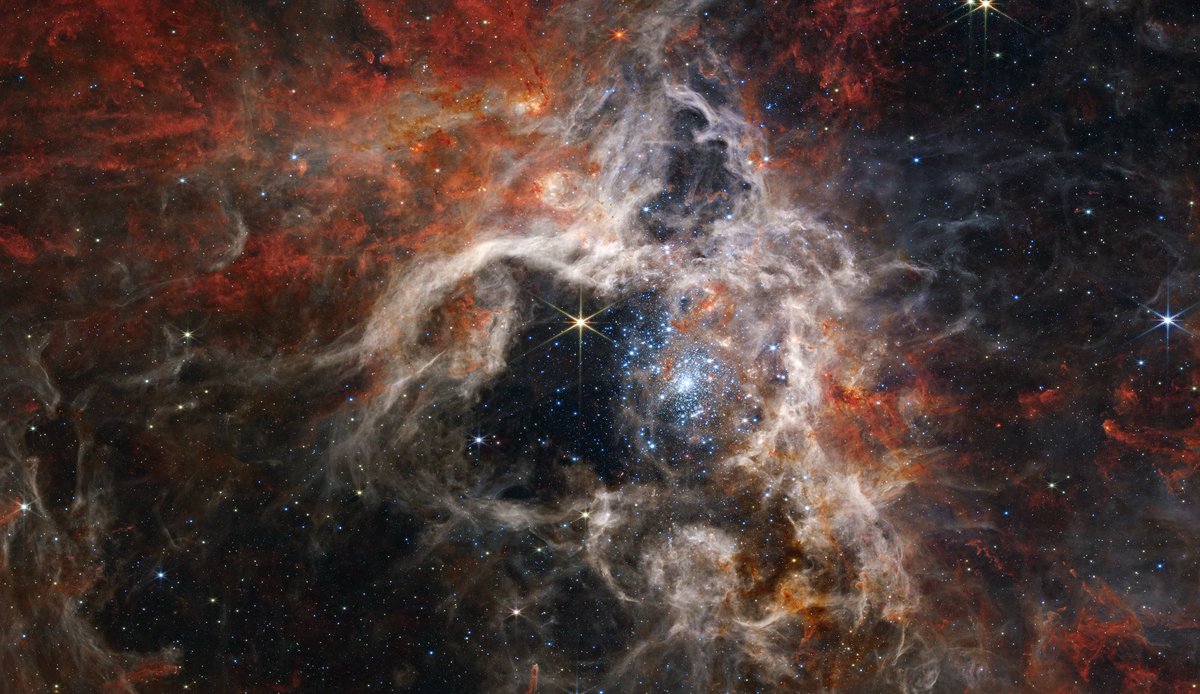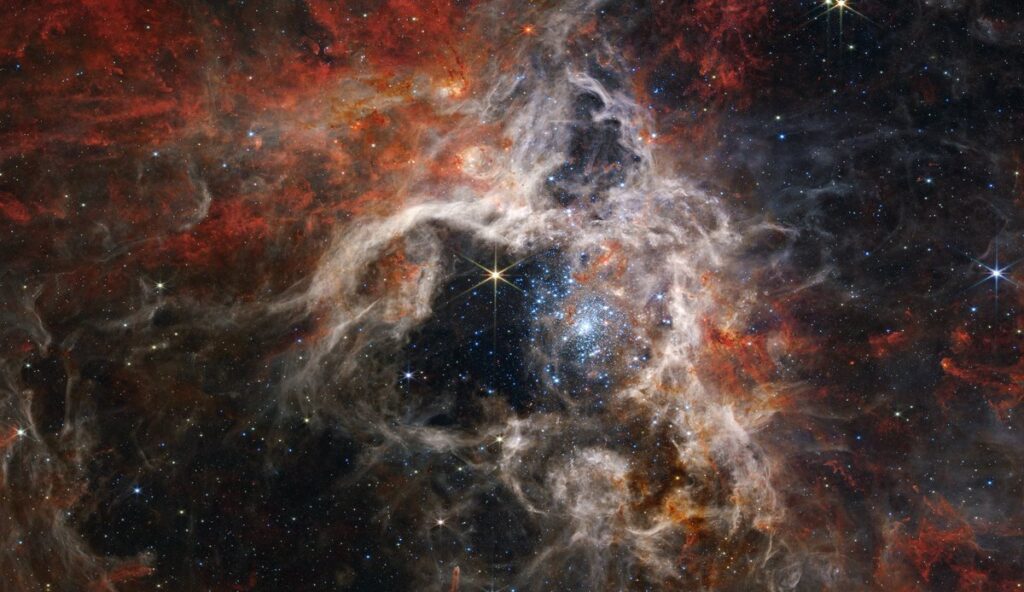News
James Webb Space Telescope Captures Incredible Image of Newly-Formed Stars in ‘Tarantula Nebula’, 161,000 Light Years Away

The James Webb Space Telescope at NASA was able to take images of thousands of young “newborn” stars that had never been seen before in the Tarantula Nebula, which is a stellar nursery in the form of a spider.
The cosmic nursery is referred to by its official name, 30 Doradus, and it is situated in the Large Megallanic Cloud galaxy, which is 161,000 light-years away. The Large Megallanic Cloud galaxy is the largest and brightest star-forming region in the Local Group, which is comprised of the galaxies that are closest to our own Milky Way.
Below is the Hubble view vs the James Webb view:
“Take a moment to stare into thousands of never-before-seen young stars in the Tarantula Nebula,” NASA shared on Twitter. “[The James Webb] reveals details of the structure and composition of the nebula, as well as background galaxies.“
“The Tarantula Nebula gets its name from its dusty filaments. The largest and brightest star-forming region near our galaxy, it’s home to the hottest, most massive stars known!” the space agency said.
This nebula provides us with knowledge on how star formation may have appeared during its most active period in the history of our cosmic environment.
When seen with Webb’s Near-Infrared Camera (NIRCam), the area seems to be laced with silk, as if it were the tunnel of a burrowing tarantula. The scorching radiation from a cluster of huge young stars seems to have hollowed out the hole that is centered in the NIRCam picture of the nebula. These stars glitter in the image in a light blue color.
Only the most compact portions of the nebula’s surroundings are able to withstand the tremendous stellar winds generated by these stars, which have the effect of producing pillars that seem to point in the direction of the cluster.
These pillars are home to protostars, which are extremely young stars that are still in the process of forming. Someday, these stars will emerge from their dusty cradles and begin contributing to the formation of the nebula.
Astronomers have been captivated by the Tarantula Nebula for many years due to the fact that its chemical composition is very similar to that of the enormous star-forming regions that were present during the so-called “cosmic noon” of the universe. This refers to the time when the universe was only a few billion years old and such star formation was at its highest point.
The star-forming areas in our galaxy, the Milky Way, do not have the same chemical makeup as the Tarantula Nebula, nor are they making stars at the same incredibly rapid pace.
When seen in the longer infrared wavelengths discovered by Webb’s Mid-Infrared Instrument, the cosmic area has a noticeably different look (MIRI).

In this picture, the bright stars have been replaced by a light that seems to come from the colder gas and dust.
“Despite humanity’s thousands of years of stargazing, the star-formation process still holds many mysteries – many of them due to our previous inability to get crisp images of what was happening behind the thick clouds of stellar nurseries,” NASA shared in a statement.
Typos, corrections and/or news tips? Email us at Contact@TheMindUnleashed.com
